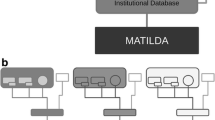Abstract
Residents have a limited time to be trained. Although having a highly variable caseload should be beneficial for resident training, residents do not necessarily get a uniform distribution of cases. By developing a dashboard where residents and their attendings can track the procedures they have done and cases that they have seen, we hope to give residents a greater insight into their training and into where gaps in their training may be occurring. By taking advantage of modern advances in NLP techniques, we process medical records and generate statistics describing each resident’s progress so far. We have built the system described and its life within the NYP ecosystem. By creating better tracking, we hope that caseloads can be shifted to better close any individual gaps in training. One of the educational pain points for radiology residency is the assignment of cases to match a well-balanced curriculum. By illuminating the historical cases of a resident, we can better assign future cases for a better educational experience.







Similar content being viewed by others
References
Bhargavan M, Kaye AH, Forman HP, Sunshine JH: Workload of radiologists in United States in 2006–2007 and trends since 1991–1992. Radiology 252(2):458–467, 2009
Willatt JMG, Mason AC: Comparison of radiology residency programs in ten countries. Eur Radiol 16(2):437–444, 2006
Denny JC, Smithers JD, Miller RA, Spickard, III A: Understanding medical school curriculum content using KnowledgeMap. J Am Med Inform Assoc 10(4):351–362, 2003
Farkas R, Szarvas G: Automatic construction of rule-based ICD-9-CM coding systems. BMC Bioinformatics 9(Suppl. 3):S10, 2008
Pereira S, Névéol A, Massari P, Joubert M, Darmoni S: Construction of a semi-automated ICD-10 coding help system to optimize medical and economic coding. Stud Health Technol Inform 124:845–850, 2006
Franz P, Zaiss A, Schulz S, Hahn U, Klar R: Automated coding of diagnoses--three methods compared. Proc AMIA Symp 2000:250–254, 2000
Lussier YA, Shagina L, Friedman C: Automating icd-9-cm encoding using medical language processing: A feasibility study. Proc AMIA Symp 2000:1072, 2000
Friedman C, Shagina L, Lussier Y, Hripcsak G: Automated encoding of clinical documents based on natural language processing. J Am Med Inform Assoc 11(5):392–402, 2004
Wibowo W, Williams HE: Simple and accurate feature selection for hierarchical categorisation. Proceedings of the 2002 ACM symposium on Document engineering 2002:111–118
Ramos J: Using tf-idf to determine word relevance in document queries. In: Proceedings of the first instructional conference on machine learning, 2003, 242:133–142
Deerwester S, Dumais ST, Furnas GW, Landauer TK, Harshman R: Indexing by latent semantic analysis. J Am Soc Inf Sci 41(6):391, 1990
Hofmann T: Probabilistic latent semantic indexing. ACM SIGIR Forum 51(2):211–218, 2017
Blei DM, Ng AY, Jordan MI: Latent dirichlet allocation. J Mach Learn Res 3(Jan):993–1022, 2003
Pennington J, Socher R, Manning C: Glove: Global vectors for word representation. Proc EMNLP Conf 2014:1532–1543, 2014
Mikolov T, Sutskever I, Chen K, Corrado GS, Dean J: Distributed representations of words and phrases and their compositionality. Adv Neural Inf Proces Syst 26:3111–3119, 2013
Krizhevsky A, Sutskever I, Hinton GE: Imagenet classification with deep convolutional neural networks. Adv Neural Inf Proces Syst 25:1097–1105, 2012
Simard PY, Steinkraus D, Platt JC: Best practices for convolutional neural networks applied to visual document analysis. ICDAR 3:958–962, 2003
Herrera F, Herrera-Viedma E: A model of consensus in group decision making under linguistic assessments. Fuzzy Sets Syst 78(1):73–87, 1996
Author information
Authors and Affiliations
Corresponding author
Rights and permissions
About this article
Cite this article
Chen, H., Gangaram, V. & Shih, G. Developing a More Responsive Radiology Resident Dashboard. J Digit Imaging 32, 81–90 (2019). https://doi.org/10.1007/s10278-018-0123-6
Published:
Issue Date:
DOI: https://doi.org/10.1007/s10278-018-0123-6




